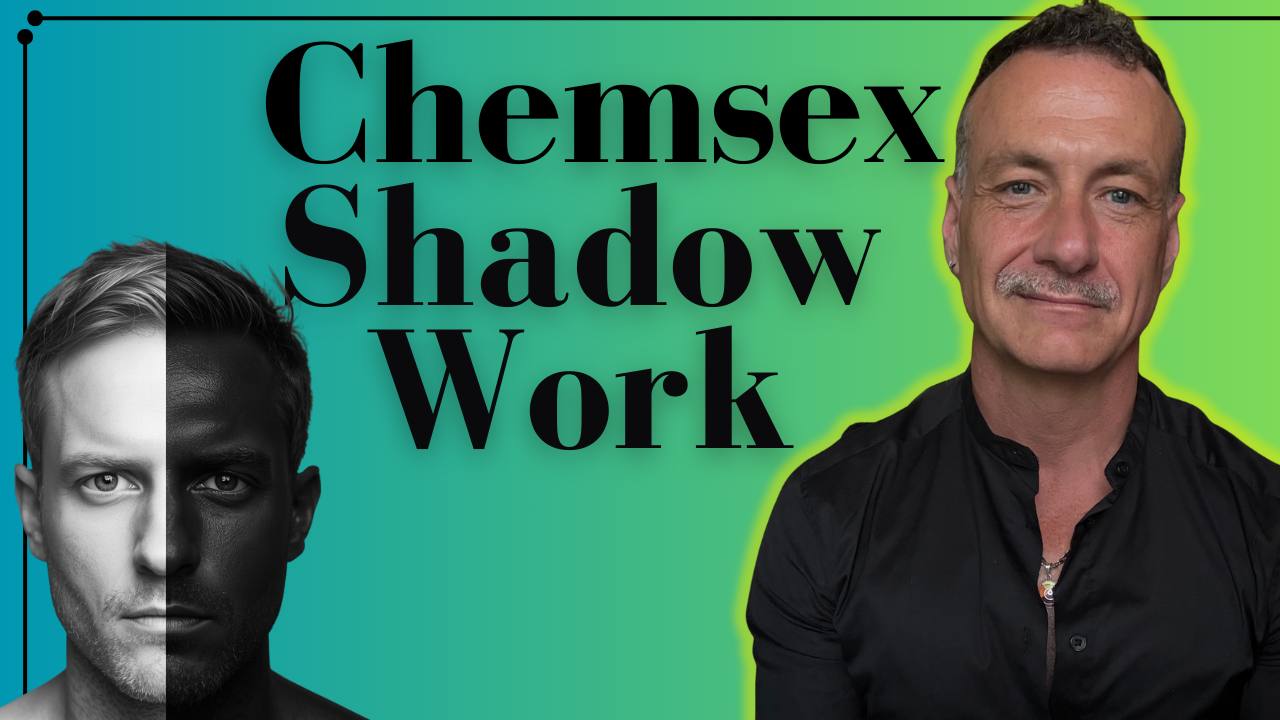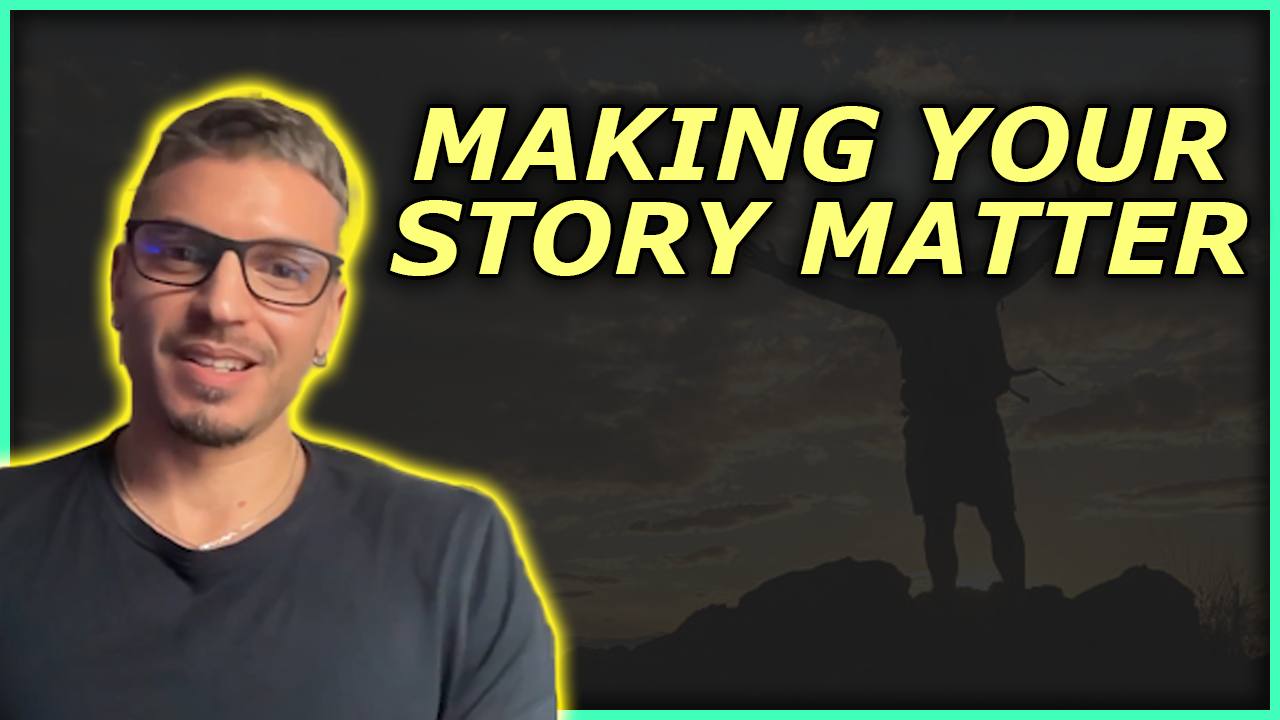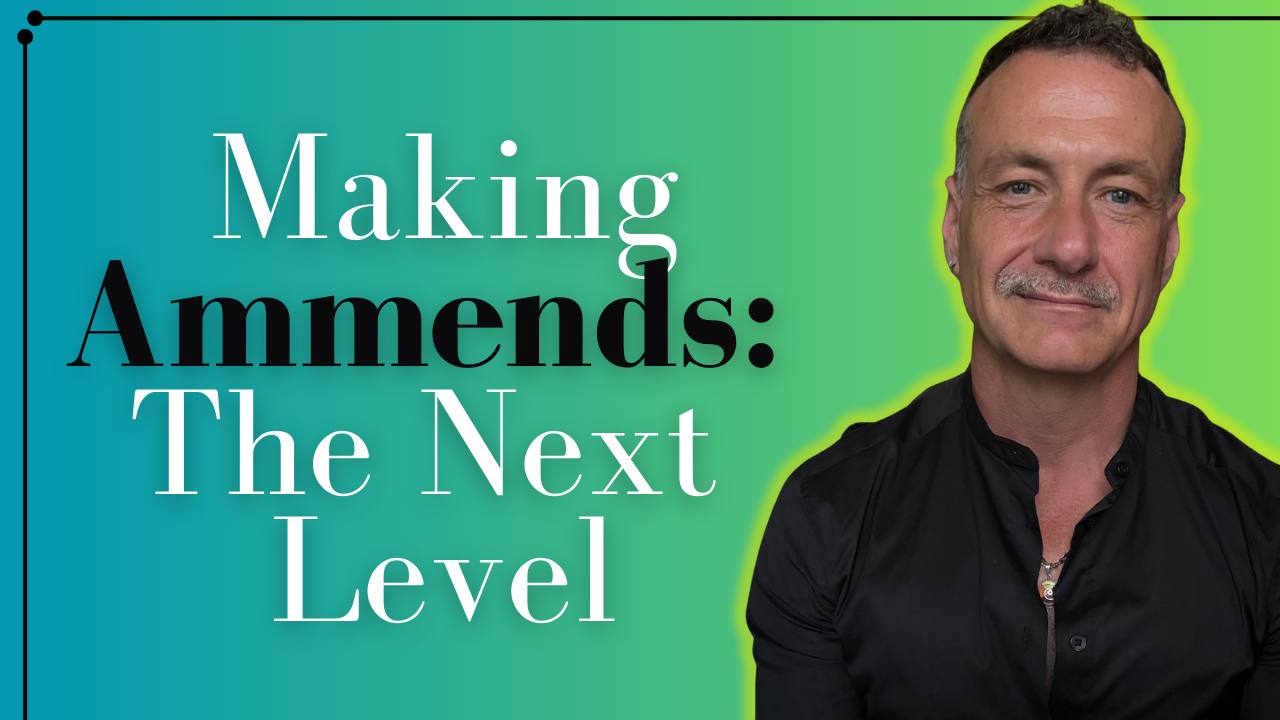Are You Ready to Break Free from Chemsex?
When it comes to chemsex recovery, I honestly don't prefer the word "cycle".
But, similar to "God", using a broadly accepted term maximizes message clarity.
I prefer Spiral (not downward, but upward).
When I think about my recovery journey, the repeated patterns I experienced (including relapse) were learning opportunities.
The learning took me to a new higher level with each repeated pattern.

During my last relapse, I was standing in a stranger's bedroom after having slammed. My ears were ringing as I noticed the guy had passed out.
Just then, his bedroom door opened to reveal a partnered couple he had invited over without my knowledge.
I had partied with one of the guys before and had recently explained that I had quit using, and told him to never contact me again.
Awkward.
At that moment, beyond the head-blasting drug rush, I felt deep in my soul that this was my last time.
It wasn't fun anymore.
It was the same stupid scenarios playing out on repeat.
I had collected all of the learning I needed about my addiction patterns.
I invite you to apply this upward spiral model to your own recovery journey. Accepting that there are no failures, only learning opportunities.
One day, you'll have your moment like I did. A core soul-shift. A knowingness. A pivot away from the life of chemsex.
That moment arrives faster once you clear out the shame and give space for compassion.
And that process is what Daniel and I discuss in this week's podcast. See study guide below!
The Neurobiological Basis of Addiction
The foundation of understanding addiction begins with its neurobiological basis.
Introducing substances into our system creates immediate changes in our brain chemistry that produce the desired effects. However, our bodies are remarkably adaptive and immediately begin working to return to a state of balance or homeostasis.
This adaptation process explains why pursuing that initial high – often called "chasing the dragon" – becomes a biological impossibility. Our brains begin releasing chemicals that counteract the effects of the substance, requiring increasingly larger amounts to achieve the same effect.
This adaptation becomes so refined that our brains learn to prepare for substance use before it occurs, releasing opposing chemicals in anticipation, which creates the discomfort and cravings that often precede use.
Reframing Recovery
Traditional approaches to recovery often emphasize complete abstinence as the only path forward.
However, a more nuanced understanding recognizes that recovery is a gradual process that benefits from realistic, achievable goals.
Rather than viewing relapse as a catastrophic failure that erases progress, we can understand it as a point on the journey – an opportunity for learning and growth.
This perspective allows for a more compassionate approach to recovery, one that acknowledges the central role of social connection.
When we understand that the opposite of addiction isn't sobriety but rather meaningful connection, we can focus on rebuilding the relationships and community ties that support lasting recovery.
The Connection Between Emotions and Use
Many people initially identify triggers for substance use as simple cause-and-effect relationships – feeling aroused leads to use, or seeing certain images prompts cravings.
However, deeper examination often reveals more complex emotional underpinnings.
What appears as a straightforward trigger often has roots in feelings of isolation, inadequacy, or disconnection that occurred days before the actual use.
Understanding substance use as an attempt to manage emotional states helps us identify the true triggers and develop more effective coping strategies.
This awareness allows us to address underlying issues rather than just managing surface-level symptoms.
Building a New Life in Recovery
Recovery involves more than just abstaining from substances – it requires building a life that supports ongoing growth and healing.
This process begins with reconnecting with oneself, rediscovering interests and passions that may have been overshadowed by substance use.
While it's important to manage expectations around sober experiences, particularly in early recovery, it's equally crucial to remain open to new sources of pleasure and meaning.
Creating increasing spaces between periods of use allows time for this rebuilding process, gradually replacing substance-centered activities with meaningful alternatives.
Reflective Questions
- Looking at your patterns of use, what emotions or life events typically precede your strongest urges to use? Consider not just the immediate trigger, but what happened in the days before.
- Think about your beliefs about a substance-free life. What fears do you hold about life without substances? Where might these beliefs have originated, and what evidence do you have that they might not be entirely true?
- Consider your relationship with social media and digital connection. How does your online engagement affect your emotional state and subsequent urges to use? What patterns do you notice?
- What role does shame or self-judgment play in your cycle of use? How might approaching yourself with more compassion, as suggested by Daniel, affect your recovery journey?
- Think about times when you've felt genuinely connected and present with others without substances. What made those moments possible? What elements from those experiences could you recreate now?
Journal Prompts
- Write about your last experience using substances. Start with what happened in the days leading up to use - what emotions were present? What social interactions occurred? What thoughts were running through your mind? Then describe what you hoped would happen when you used versus what actually occurred.
- Imagine yourself three years from now, living a life that feels fulfilling and meaningful. What does your daily routine look like? Who are you spending time with? What activities bring you joy? Be as specific as possible about this vision.
- Think about a recent craving that you either acted on or overcame. Write about the experience from an observer's perspective, as if you're watching a movie of yourself. What do you notice about your behavior, thoughts, and feelings that you might have missed in the moment?
- Describe your relationship with pleasure. How has substance use affected what you find enjoyable? Write about activities or experiences that used to bring you joy before substances entered your life. What small steps could you take to reconnect with these sources of natural pleasure?
- Write a letter to yourself for moments of struggle. Include reminders of why you're pursuing recovery, what you've already accomplished, and specific strategies that have helped you in the past. Be compassionate and encouraging, as if you're writing to a dear friend.
Action Exercises
Create a Comprehensive Trigger Map Set aside an hour in a quiet space. Draw a circle in the middle of a page with "use" written inside. Around this circle, start mapping out events, emotions, and situations that typically lead to use. Include both immediate triggers and events that occurred days before. Look for patterns and connections. Use this map to identify early warning signs and develop intervention strategies for each pathway to use.
Design Your Recovery Environment Take a full inventory of your physical and digital spaces. Walk through your home, noting areas associated with use. Review your phone's apps and social media. Make a concrete plan to modify these environments - this might mean rearranging furniture, creating new morning and evening routines in certain spaces, deleting or restricting apps, or setting up new positive associations with previously triggering locations.
Build Your Support Network Map Create a comprehensive support network diagram. Start by listing every person you could potentially reach out to during difficult moments. Next to each name, write specific ways they can help (emotional support, practical help, distraction, etc.) and the best times/ways to contact them. Include professional resources, support groups, and crisis hotlines. Keep this map easily accessible.
Develop a Pleasure Rediscovery Practice Choose one natural (non-substance) source of pleasure to rebuild each week. Start extremely small - even just 5 minutes of an enjoyable activity. Keep a daily log noting your level of interest before the activity, any resistance you feel, and how you feel afterward. Gradually increase the time spent on these activities as you rebuild your capacity for natural pleasure.
Create a Craving Response Protocol Develop a detailed, step-by-step protocol for handling cravings. Write out specific actions to take at different intensity levels of craving. Include grounding techniques, physical activities, people to contact, and positive self-talk scripts. Practice this protocol when cravings are low to build muscle memory for more challenging moments.
Remember: These exercises aren't meant to be completed all at once. Choose one that resonates most with your current situation and focus on implementing it fully before moving to others. Progress in recovery isn't linear - each small step forward contributes to lasting change.





Responses